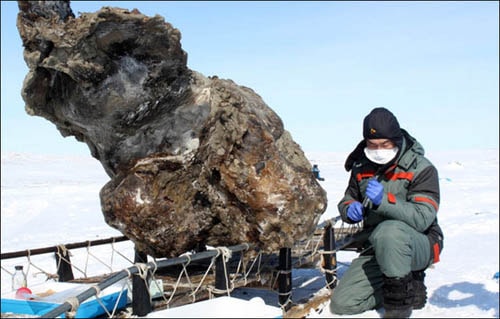Mammoths could be 'resurrected'
A complete woolly mammoth carcass found in Siberia, Russia, could open up hope of cloning the extinct animal.
| RELATED NEWS |
|---|
 |
| Buttercup mammoth remains were found in Siberia, Russia, in 2013. Photo: Live Science |
The mammoth was found in 2013, buried in the permafrost in a remote part of Siberia. It was named Buttercup.
During the search, a team of experts from Russia's Northeastern Federal University discovered two large tusks protruding from the ground. Its body was almost intact, with three legs, part of its head and trunk. After thousands of years of being preserved under ice, the elephant's flesh was still fresh, with a dark red liquid that could be blood.
Based on Buttercup’s excellent preservation, researchers determined that she lived around 40,000 years ago and had a lifespan of around 50 years. Based on the ivory analysis, they believe Buttercup had eight calves. She ate buttercups and dandelions. Tooth marks on the mammoth bones suggest she may have gotten stuck in a bog and been attacked by wolves.
Live Science said the discovery could open up hope for cloning and resurrecting the mammoth. Analysis will be conducted to learn more about Buttercup's life and determine whether its DNA can be cloned. Previously, the DNA of other mammoth carcasses was not intact enough to perform cloning experiments.
Scientists believe that mammoths became extinct more than 10,000 years ago, but some individuals lived as late as 1,650 BC.
According to VnExpress






